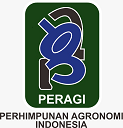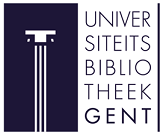Application of Biogas with Fermenting Bacteria from Manure Raw Material on Stoves and Generators
Abstract
The raw biogas from the digester is a gas produced by bacterial fermentation which has a composition of methane (CH4), carbon dioxide (CO2), hydrogen sulfide (H2S), water vapor, and various other gases. Gases other than methane in raw biogas can damage the combustion system if used directly. The digester that produces biogas is used to move the generator engine using raw materials, such as cow feces, goat feces, fowl feces, straw, husks, and clean water. In the mixing process, all the raw materials are stirred or mixed evenly in the digester. Next is the process with five stages, namely (1). In the first stage: on the 11th day, adding clean water and fermentation carried out for 21 days, (2). The second stage: adding starter, hormones, charcoal flour, cow feces, fowl fees, goat feces, straw, and husks, then fermented for 7 days. (3). The third stage: adding a starter and fermenting it for 7 days. (4). Fourth stage: ready-to-use compost or solid fertilizer is ready to produce. (5). Fifth stage: liquid fertilizer is ready for production. In the gathering stage: all raw materials are stirred or mixed evenly in the digester and fermented for 1.5 months to become biogas. The last stage is the distribution of biogas: for household needs, and generators. From this research, it can conclude that the water column height (h) is 10.42 cm, and the maximum water column height is 9 cm so that the reactor is safe and the maximum pressure that can be attained is 879.1918 kg.m-1.s-2. The heating rate for ratio A is 0.0600 oC.s-1 and the heating rate for ratio B is 0.0640 oC.s-1. The calorific value produced from heating 1 liter of clean water using biogas from ratio A is 297.99315 kJ, and the calorific value of ratio B is 288.9174 kJ. With a compressor pressure of 8 psi, biogas can be inserted in this using a freon tube for a maximum of 6000 seconds with a mass of 6163 grams. In filling biogas, the biogas manometer should show the maximum number (between 16.50 – 25.50).
Keywords
Full Text:
PDFReferences
Adisasmito, S., Rasrendra, C. B., Chandra, H., & Gunartono, M. A. (2018). Anaerobic reactor for Indonesian tofu wastewater treatment. International Journal of Engineering and Technology(UAE), 7(3), 30–32. https://doi.org/10.14419/ijet.v7i3.26.17456
Ihsan, A., Bahri, S., Musafira. 2013. Pembuatan Biogas menggunakan cairan isi rumen Sapi dengan limbah cair Tempe.Jurnal of Natural Sciense 2(2): 27–35.
Ma, Y., Yin, Y., Liu, Y. (2017). Corrigendum to “New insights into co-digestion of activated sludge and food waste: Biogas versus biofertilizer”. Bioresource Technology. 241, 448–453,DOI: 10.1016/j.biortech.2017.07.152.
Nasution, M. (2020). Smart-Design Instalasi Digester Biogas Skala Komunal Pesantren High Temperature. Jurnal Agregat, 5(2), 475–480.
Rathod, V. P., Bhale, P. V, Mehta, R. S., Harmani, K., Bilimoria, S., Mahida, A., & Champaneri.
V.P. Rathod, P.V. Bhale, R.S. Mehta, K. Harmani, S. Bilimoria, A. Mahida, H. Champaneri. (2018). Biogas Production from Water Hyacinth in the Batch type Anaerobic Digester. Materials Today: Proceedings, 5(11, Part 2), 23346–23350.
https://doi.org/10.1016/j.matpr.2018.11.072
Ghosh, P., Shah, G., Sahota, S., Singh, L., Vijay, V. K. (2020). Biogas production from waste: technical overview, progress, and challenges. Bioreactors, 89-104, DOI: 10.1016/B978-0-12- 821264-6.00007-3.
Ghosh, P., Kumar, M., Kapoor, R., Kumar, S. S., Singh, L., Vijay, V., Vijay, V. K., Kumar, V., Thakur, I. S. (2020). Enhanced biogas production from municipal solid waste via co-digestion with sewage sludge and metabolic pathway analysis. Bioresource Technolog. 296, 122275. DOI: 10.1016/j.biortech.2019.122275.
Awasthi, M. K., Sarsaiya, S., Wainaina, S., Rajendran, K., Kumar, S., Quan, W., Duan, Y., Awasthi, S. K., Chen, H., Pandey, A., Zhang, Z., Jain, A., Taherzadeh, M. J. (2019). A critical review of organic manure biorefinery models toward sustainable circular bioeconomy: Technological challenges, advancements, innovations, and future perspectives. Renew. Sustain. Energy Rev. 111, 115–131, DOI: 10.1016/j.rser.2019.05.017.
Xing, B.-S., Han, Y., Cao, S., Wen, J., Zhang, K., Yuan, H., Wang, X. C. (2020). Cosubstrate strategy for enhancing lignocellulose degradation during rumen fermentation in vitro: Characteristics and microorganism composition. Chemosphere. 250, 126104, DOI: 10.1016/j.chemosphere.2020.126104.
Asmiarti. 2019. Kualitas Bahan Biogas dan Biogas dari Feses Sapi dan Limbah Kulit Nanas dengan C/N Rasio yang Berbeda. Skripsi. Program Studi Peternakan Fakultas Pertanian dan Peternakan Universitas Negeri Sultan Syarif Kasim Riau. Pekanbaru.
Afrian, Chandra. 2017. “Produksi Biogas dari Campuran Kotoran Sapi dengan Rumput Gajah (Pennisetum purpureum)’’. Universitas Lampung. pp:24.
Omer, Abdeen. 2017. “Biogas Technology for Sustainable Energy Generation: Development and Perspectives”. Energy Research Institute (ERI), United Kingdom. pp:22.
Masrukhil. 2017. “Optimasi Kandungan Metana (CH4) Biogas Kotoran Sapi Menggunakan Berbagai Jenis Adsorben’’. Universitas Jenderal Soedirman. pp:9.
Kurniawan, Puspito. 2019. “Konversi Energi Biogas Menjadi Energi Listrik Sebagai Alternati Energi Terbarukan dan Ramah Lingkungan di Desa Langse, Kecamatan Margorejo Kabupaten Pati”. Universitas Diponegoro. pp:5.
Kholik, Muhammad. 2018. “Kajan Potensi Pemanfaatan Biogas Sebagai Salah Satu Sumber Energi Alternatif di Wilayah Magelang”. Universitas Tidar. pp:8.
Fitriyah, Qoriatul. 2018. “Pembangkit Listrik Tenaga Biogas dengan Digester Tipe Balon di Peternakan Sei Temiang Batam”.Politeknik Negri Batam. pp:65.
Afrian, Chandra. 2017. “Produksi Biogas dari Campuran Kotoran Sapi dengan Rumput Gajah (Pennisetum purpureum)’’. Universitas Lampung. pp:24.
Adisasmito, S., Rasrendra, C. B., Chandra, H., & Gunartono, M. A. (2018). Anaerobic reactor for Indonesian tofu wastewater treatment. International Journal of Engineering and Technology(UAE),7(3),30–32. https://doi.org/10.14419/ijet.v7i3.26.17456.
Fitrah, M., Wiryono, B., DP, G. M., & Asmawati.(2018). Analisis Peresentase Penambahan Pupuk Kandang (Kotoran Sapi) Dan Limbah Tahu Dalam Pembuatan Biogas. Jurnal Agrotek UMMat, 5(1), 61. https://doi.org/10.31764/agrotek.v5i1.247.
Irawan, D., & Ridhuan, K. (2017). Pengaruh Temperatur Mesofilik Terhadap Laju Aliran Biogas Dan Uji Nyala Api Menggunakan Bahan Baku Limbah Kolam Ikan Gurame. Turbo : Jurnal Program Studi Teknik Mesin, 5(2), 76–81. https://doi.org/10.24127/trb.v5i2.238.
K., Bilimoria, S., Mahida, A., & Champaneri, H. (2018). Biogas Production from Water Hyacinth in the Batch type Anaerobic Digester. Materials Today: Proceedings, 5(11, Part 2), 23346–23350. https://doi.org/https://doi.org/10.1016/j.matpr. 2018.11.072.
Yahya, Y., Tamrin, T., & Triyono, S. (2018). Produksi Biogas Dari Campuran Kotoran Ayam, Kotoran Sapi, Dan Rumput Gajah Mini (Pennisetum Purpureum cv. Mott) Dengan Sistem Batch. Jurnal Teknik Pertanian Lampung (Journal of Agricultural Engineering),6(3), 151. https://doi.org/10.23960/jtep-l.v6i3.151-160.
Refbacks
- There are currently no refbacks.


























